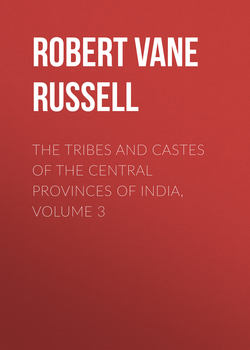Читать книгу The Tribes and Castes of the Central Provinces of India, Volume 3 - Robert Vane Russell - Страница 98
Gond-Gowāri
ОглавлениеGond-Gowāri.96—A small hybrid caste formed from alliances between Gonds and Gowāris or herdsmen of the Marātha country. Though they must now be considered as a distinct caste, being impure and thus ranking lower than either the Gonds or Gowāris, they are still often identified with either of them. In 1901 only 3000 were returned, principally from the Nāgpur and Chānda Districts. In 1911 they were amalgamated with the Gowāris, and this view may be accepted as their origin is the same. The Gowāris say that the Gond-Gowāris are the descendants of one of two brothers who accidentally ate the flesh of a cow. Both the Gonds and Gowāris frequent the jungles for long periods together, and it is natural that intimacies should spring up between the youth of either sex. And the progeny of these irregular connections has formed a separate caste, looked down upon by both its progenitors. The Gond-Gowāris have no subcastes, and for purposes of marriages are divided into exogamous septs, all bearing Gond names. Like the Gonds, the caste is also split into two divisions, worshipping six and seven gods respectively, and members of septs worshipping the same number of gods must not marry with each other. The deities of the six and seven god-worshippers are identical, except that the latter have one extra called Durga or Devi, who is represented by a copper coin of the old Nāgpur dynasty. Of the other deities Būra Deo is a piece of iron, Khoda and Khodāvan are both pieces of the kadamb
96
This article is based on a paper by Pandit Pyāre Lāl Misra.
